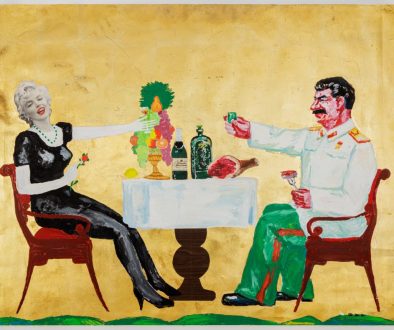A Cherished Memento
This jewel of a portrait is precious for multiple reasons. It is a virtuoso example of the early work of John Singleton Copley, and is an undeniably beautiful painting. But perhaps equally, it is significant for the private story it tells. When John and Judy Herdeg acquired this painting in the late 1990’s, they began a years-long effort to uncover the full story behind the painting.
Boston apothecary Dr. John Greenleaf married Priscilla Brown in 1743 and had three children, Priscilla (b.1746), Elizabeth (b.1748), and John (b.1750). Tragically, Priscilla Brown is thought to have died after the birth of John, Jr.
Dr. Greenleaf engaged the foremost Boston portraitist of the time, Joseph Badger, to paint portraits of his children in 1750. Badger painted Priscilla and her sister, but did not get a chance to paint their brother John Jr. before all three children died, in a tragedy that defies reason.
By tradition in the family, found on an old slip of paper on the Back of Elizabeth’s portrait, all three children were poisoned. “Their mother had died and they were in the care of a nurse. She, wishing to go to the Boston Common and watch the “Redcoats” drill, gave them all laudanum to put them to sleep. All three were dead in the morning. The nurse confessed, and was hung, quartered, and burned on Boston Common.” (Herdeg, p.56)
John and Judy Herdeg consulted with many experts during their research. Finally, D. Brenton Simons, of the New England Historic Genealogical Society, found Boston newspaper articles from 1751 reporting the deaths, the trial of “Phyllis”, and her execution. The Massachusetts State Archive confirmed the deaths of John and one of his sisters. Since there is no record of a surviving sister, it is probable that all three perished as described.
Dr. Greenleaf was left alone, in circumstances that must have seemed unbearable.
A member of the Brattle Street Church in Boston, Dr. Greenleaf learned of a brilliant young painter in the neighborhood: John Singleton Copley (1738-1815). Still a teenager, Copley had studied the work of the Boston painters, and was already far superior in talent. Copley painted the three portraits either in 1753-54 or in 1756-57.
Together, the three portraits of the Greenleaf children rank among the most noteworthy of Copley’s early work. They are masterpieces in the rococo style, with rich fabrics and coloring, dramatic bright lighting. The figures have intense character and directness. Hanging together, the portraits must have spoken to Dr. Greenleaf, with a vitality akin to physical presence.
The career of John Singleton Copley in America “was not only significant, it was the signal achievement of American colonial art.” (American Paintings in the Metropolitan Museum of Art, Vol. I) Until Benjamin West and Joshua Reynolds encouraged him to leave in 1774 to study art in Europe, Copley captured the faces of America’s colonial past. These are the faces that come to mind when picturing Paul Revere, John Hancock, and Samuel Adams. Copley is considered the greatest American painter of the 18th century.
Please join us at Pook & Pook on January 16th and 17th, 2025, for our Americana and International sale to view this portrait, as well as the original work by Joseph Badger, upon which it is based.
By: Cynthia Beech Lawrence




